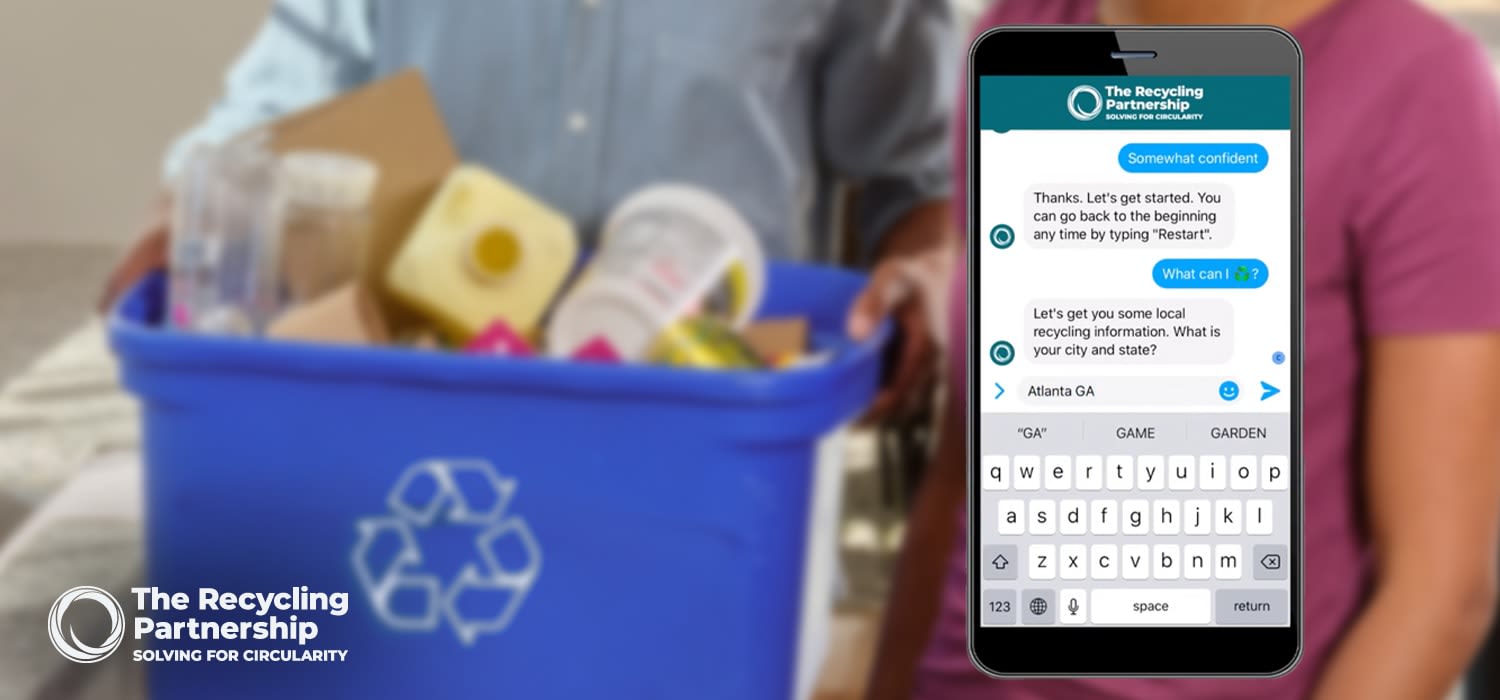
(March 2, 2022) – The Recycling Partnership announced today that it has developed a National Recycling Database, offering a comprehensive source for local recycling information across the U.S. This first-of-its-kind database, and the community outreach and product design tools based on this data, will empower households, manufacturers, retailers, brands, policymakers, environmental organizations, and government officials to understand how individual recycling programs are conducted, what materials are recyclable at the local level, and ultimately how to improve packaging recyclability.
The U.S. recycling system is not a unified or governmental entity, but rather a network of 9,000+ separate local recycling programs. Each individual program has specific parameters for which materials can be recycled, and municipalities collect recyclables in different ways. This is the first time that a systematic search of community programs has been completed and aggregated into a database that will be able to answer questions for consumers, companies, and recycling professionals, such as “Is this container recyclable in my town?”, “How do we design packaging for recyclability?”, and “How can we improve recycling in my community?” The Recycling Partnership’s National Database contains continuously updated data that will make it possible to answer these questions and more through a suite of tools that are currently under development.
With generous support from Apple, The Recycling Partnership created the first database that indicates what materials are accepted for recycling based on specific community programs, versus general information about what’s recyclable in an area. This complex database incorporates research of all local U.S. recycling websites with communities of over 2,500 households (97% of the U.S. population) and a custom neural network that captures local recycling changes as they occur. With this first-ever resource, the country is taking a bold step towards the innovative system of the future. A video showing how the database works can be found here.
The Recycling Partnership is actively working to deliver a series of digital tools that will harness the breadth and depth of the database for multiple audiences. The first offering will be a chat-bot tool – available this Spring through both The Recycling Partnership’s website and other online channels – that will answer household recycling questions to address common confusion (e.g., “Is my yogurt container recyclable in my community?”). The Recycling Partnership will also use the database in tandem with its recent Pathway to Circularity Recyclability Framework, which supports companies in taking action to ensure their product is recyclable. Though some packaging may require further innovation, the database will allow for the recyclability of these packages to be communicated in real-time to consumers. Given the power of the National Recycling Database, The Recycling Partnership envisions multiple opportunities to collaborate with communities, App creators, and other partners. As tools are released, The Partnership will be engaging community and industry partners to get feedback on the data and input on future offerings.
The Recycling Partnership currently uses the database to target investments in strategic ways, focusing on communities that most need support. Ultimately, the National Recycling Database will fuel the transformation of today’s U.S. recycling system into a system of the future, allowing:
- Consumers to access trustworthy local recycling information;
- Local recycling program coordinators to convey updated and correct recycling information to residents;
- Retailers and brands to design packaging for maximum recyclability;
- Material producers to determine steps to overcome impediments to recyclability;
- Policymakers at the state and federal level to determine what is accepted for recycling at the local level.
“We are thrilled to share this powerful database that offers a hyperlocal and a high-level view of the U.S. recycling system at any given moment,” says Aaron Burman, VP of Data & Analytics. “We’ve built a state-of-the-art neural network to detect changes in community websites, but this is really just the data foundation for a suite of tools that will help drive circularity throughout the U.S. economy.”
“Advancing a circular economy requires concerted efforts and focus at all levels of the recycling supply chain,” explains Sarah Dearman, VP of Circular Venture. “The National Database will enable us to strategically affect package design, convey real-time recyclability information, and target action to improve the recycling system where it is needed most so that we can build a circular packaging system of the future together in an informed, cohesive manner.”
To access a video demonstration of the National Database, or to learn more about The Recycling Partnership, visit recyclingpartnership.org.
About The Recycling Partnership
At The Recycling Partnership, we are solving for circularity. We mobilize people, data, and solutions across the value chain to unlock the environmental and economic benefits of recycling and a circular economy. We work on the ground with thousands of communities to transform underperforming recycling programs; we partner with companies to achieve packing circularity, increase access to recycled materials, and meet sustainability commitments; and we work with government to develop policy solutions to address the systemic needs of our residential recycling system and advance a circular economy. We foster public-private partnerships and drive positive change at every step of the recycling and circularity process. Since 2014, we have diverted 500 million pounds of new recyclables from landfills, saved 968 million gallons of water, avoided more than 500,000 metric tons of greenhouse gases, and driven significant reductions in targeted contamination rates. Learn more at recyclingpartnership.org.
